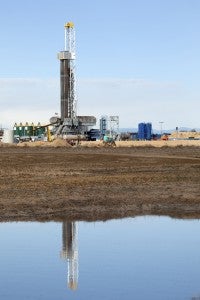What EPA Should Consider on Their Final “Fracking” Assessment
 Questions about if and how hydraulic fracturing activities (or “fracking” to some) can contaminate drinking water have been top-of-mind for many since the practice started getting widespread public attention about a decade ago. Recognizing the validity of those concerns, EPA undertook a study to see how the full ‘hydraulic fracturing water cycle’ – which includes water withdrawals, chemical use and mixing, well injection, waste water management and disposal — could potentially impact our drinking water resources. In a EPA draft assessment released last fall, the agency summarized its results, saying researchers “did not find evidence that [fracking] mechanisms have led to widespread, systemic impacts on drinking water resources.”
Questions about if and how hydraulic fracturing activities (or “fracking” to some) can contaminate drinking water have been top-of-mind for many since the practice started getting widespread public attention about a decade ago. Recognizing the validity of those concerns, EPA undertook a study to see how the full ‘hydraulic fracturing water cycle’ – which includes water withdrawals, chemical use and mixing, well injection, waste water management and disposal — could potentially impact our drinking water resources. In a EPA draft assessment released last fall, the agency summarized its results, saying researchers “did not find evidence that [fracking] mechanisms have led to widespread, systemic impacts on drinking water resources.”
EPA’s draft assessment synthesized valuable information and explored a number of key areas of concern. But EDF didn’t agree with the way EPA summarized its findings. And it turns out, after hearing from EDF and other experts across the country, neither do EPA’s advising scientists.
Now, through ongoing review by the Science Advisory Board, the agency is getting feedback, yet again, from dozens of concerned parties (including EDF) with vested interest in making sure EPA gets this assessment right. Here are three things to keep in mind.
“No evidence” does not mean no problem
The error of EPA’s main takeaway is it attempts to reach a uniform conclusion about a set of activities and impacts that are far from uniform.
Impacts that are not “widespread” or “systemic” are still impacts – even if they are outliers, infrequent, rare, localized, or poorly understood. These impacts matter, and they should not be ignored even if they do not happen at every site and do not happen all the time.
In attempting to reach a broad conclusion, the Agency has developed a message that is unclear at best and misleading at worst. The statement must be modified – or it risks supporting the notion that these practices are conclusively and inherently “safe” – drowning out 1,000 pages of research and years of work, and discounting a number of confirmed and potential impacts cited in the new report. No interests are served by translating years of work into a one-sentence summary that does little to advance our understanding of today’s operations and their potential impacts on communities.
Expose data gaps—so we can close them
We can’t expect one report to answer every question about the impacts of hydraulic fracturing activities, and the agency should not let this report be the final word on the matter. A lot of additional research is clearly needed, and EPA should use this assessment – and what the agency learned in compiling it – to emphasize priority research needs that could support more definitive answers in the future.
Burying uncertainties, limitations, and unknowns deep in the pages of this report isn’t helpful. EPA is in a powerful position to use this experience, and its authority, to develop and recommend a research agenda that can have a real impact on the way we understand and address risks from hydraulic fracturing activities in the future. We need the agency to clearly explain what the important research needs are as well as the key questions that must be answered to allow for a better review in the future.
An honest answer is the best answer
The public is looking for a straight answer from EPA on what to worry about, what not to worry about, and why – and the current message has done little to address that need.
EPA should send a clear and direct message about the key takeaways from their research:
- Hydraulic fracturing activities can – and do – impact the environment and communities, even if incidents don’t happen at every site, all the time
- Because impacts do occur, they must be acknowledged, studied, and addressed
- Further research is needed to fill the gaps that hindered this analysis to allow for more robust conclusions in the future
It may not be short and “sweet” like the original summary, but it’s what the public deserves.
What’s Next
EPA has drafted a good report that will serve as a great resource and springboard for future research. But it needs some key improvements, and that’s what we’re continuing to advocate for at the Science Advisory Board as they continue their review of the draft this spring.
We’re also advocating for timely finalization of SAB’s review and EPA’s report before its value is diminished with the passage of time. Swiftly improving and finalizing this initial EPA Assessment is necessary to improve the way we understand and manage risks associated with hydraulic fracturing. It’s time to turn our collective attention to what matters most: gathering new data, conducting new research, and putting smart policies and practices in place to reduce these risks and protect public health and the environment.










